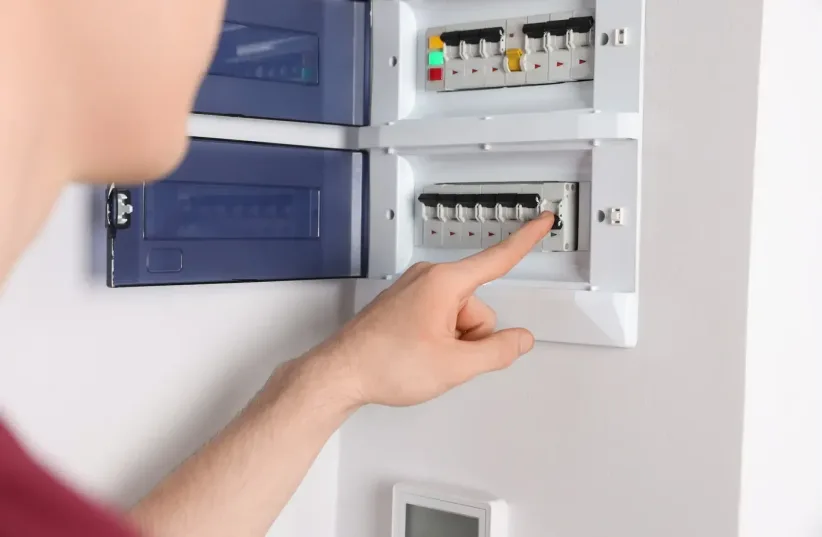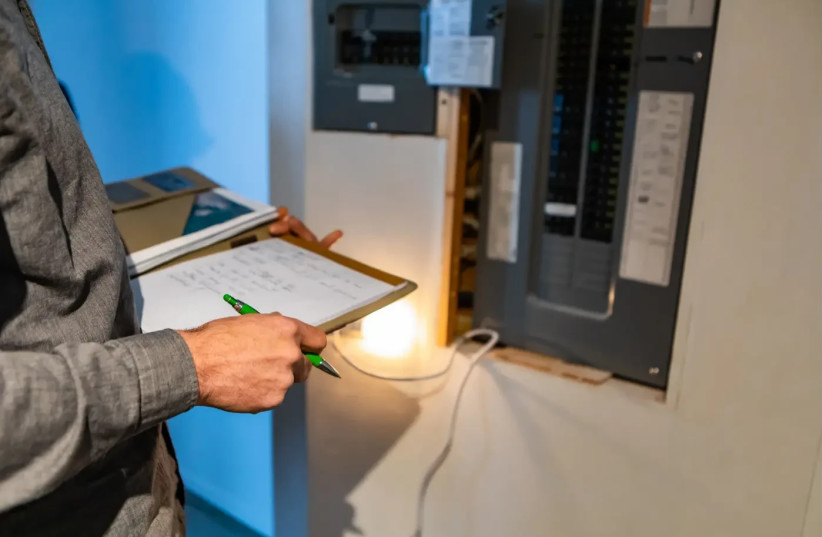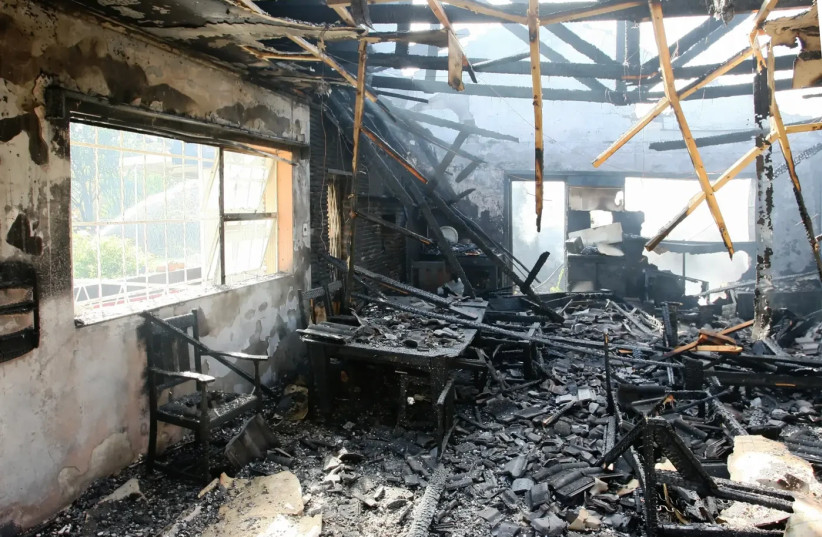With all due respect to the design requirements, your life is worth more. Therefore, although the electrical cabinet is usually located in the entrance space to the house, it is important that its design prioritizes safety and functionality. A successful hiding of the electrical cabinet is one that puts safety first, while adhering to the mandatory standards in terms of the choice of materials and the ventilation design of the electrical panel.
In the second place, the functionality and ease of access to it in emergency situations. In third place, design aesthetics. Therefore, you should avoid unnecessary and dangerous shortcuts. Even if you are already "after Form 4", do not underestimate the standards, and do not save costs when it comes to your safety.
The price you will pay is not only financial, above all it is the price of your safety and that of your loved ones. We checked with qualified electricians of the "Professionals" website what is important to know during the planning and construction phase of an electrical cabinet, whether you are in the construction or renovation phases.
With all the desire to "disappear" the electrical panel, you have to remember that it must remain accessible, that access to it will be safe and that you can easily reach it during a short circuit, or the need for regular repairs and maintenance.
The mistake: The most significant mistake to avoid is blocking access to the electrical panel. Hiding the electrical cabinet behind a built-in piece of furniture or behind a heavy mirror that will also put you at risk of broken glass? A big mistake.
An art piece with a bulky frame, a large electrical device and even a heavy flower pot - all of these are considered obstacles in an emergency situation. If the way to the electrical panel is not convenient and fast at any given moment, you risk the safety of yourself and your loved ones, as well as your property. The lack of access may hinder the immediate disconnection of the electric current in critical situations, and put you at risk of electric shock or fire.
What to do: In an emergency, the cabinet should be accessible for immediate opening of the electrical cabinet, without any delay. Therefore, make sure to hide the closet with a decorative door that blends in with the wall or with a piece of furniture that can be moved easily and quickly. The rule of thumb is that design is secondary to safety.
Make sure that the cover of the electrical panel can be opened without obstacles, and allow good visibility and accessibility to all the switches and circuit breakers of the panel at any given moment. What to do: Implement a design that allows easy access to the electrical panel. This could be using a decorative door that blends in with the wall or designing a piece of furniture that can be easily moved.
The key is to ensure that the panel cover can be opened without obstruction, allowing full visibility and accessibility to all switches and circuit breakers. Compliance with local building codes and electrical standards is not optional; This is a requirement.
These regulations are established to ensure that all electrical facilities, including the way the electrical panels are hidden or accessed, meet safety standards that prevent fire hazards and electrical accidents.
Ignoring regulations - a dangerous mistake: Ignoring or bypassing these regulations on purpose can result in fines, mandatory repairs, or even more serious legal consequences. Moreover, non-compliance can significantly increase the risk of electrical faults, accidents or fires, endangering the safety of passengers.
What to do: Best practices: Before implementing any concealment solutions, consult with a licensed electrician or local building inspector to understand the specific requirements and recommendations for your area. This may include maintaining a certain distance around the board, using specific materials or ensuring a certain level of accessibility.
With or without connection to form 4, when it comes to electricity don't be smart. Be sure to comply with the safety standards established by law, employ only a qualified electrician with a valid license and ensure that the electrical cabinet and access to them meet all requirements. Remember that these standards are written in blood, and they are designed to protect you and your loved ones. Beyond that, violating the regulations can deprive you of your insurance and expose you to unnecessary lawsuits if damage is caused to neighbors, sub-tenants, guests and professionals who come to your home.
The mistake: the desire to hide the electrical cabinet, save installation costs, and 'round corners' can cost you dearly. Failure to comply with the standards and requirements of the law, and employing an electrician who is not qualified, significantly increases the risk of malfunctions in the electrical system, putting you at risk of igniting which can lead to a fire and endanger you, your loved ones and your property.
What to do: already at the planning stage, consult with a qualified electrician even before placing an order with a carpenter, a professional in the field of plaster or any other field. The quality of the materials and their suitability, the installation method and observing the rules for the spacing around the board, the required amount of ventilation and the accessibility to the board in an emergency - all these will protect you and not expose you to unnecessary risks.
For additional safety guides in the field of electricity, click here
Electric panels produce heat. In the absence of sufficient ventilation, the temperature of the electrical panel may rise, causing damage to the electrical components. In doing so, you are exposed to the danger of the electrical wires catching fire. Therefore, the design should be secondary in importance. Each hiding element of the electrical cabinet must be such as to allow sufficient air circulation, which will maintain an appropriate temperature of the electrical panel.
The mistake: installing air conditioning systems too close to the electrical panel is serious. The electrical cabinet area must be separated from the rest of the systems in the house. Placing an electrical panel too close to devices that produce heat (such as ovens and air conditioning systems), can cause heat to accumulate near the electrical cabinet.
In doing so, the temperature in the electrical panel can be too high and cause the electrical wires in it to overheat.
What to do: First, and as much as it depends on you (such as when planning a private house), make sure to place the electrical panel in advance in an accessible location and away from direct heat sources. If it is a small apartment, and the location of the electrical panel is a fixed figure, make sure to keep other heavy electrical appliances that can emit heat away from it, and make sure to insulate the electrical cabinet with flame retardant materials and while incorporating ventilation solutions that will prevent trapped moisture near the electrical panel.
One of the most flammable elements in any building is the electrical panels. Therefore, it is important to make sure that the electrical cabinet and its decorative covering are made of materials that do not conduct electricity and that are considered fire resistant. Otherwise, the use of unsuitable materials may cause a real safety hazard, including the risk of fire or electric shock.
The dangerous mistake - use of flammable materials: Using flammable materials, such as certain metals or wood that has not been properly treated, may turn a simple concealment solution into a significant hazard. But not only the covering of the cabinet should be made of suitable materials, but also the electrical cabinet itself. If in the past, if in the past electrical cabinets were built of wood, today the use of metal materials is more common. By using a sealing material for electrical panels, it is possible to prevent the spread of the fire into the electrical cabinets and electrical panels in the building and, above all, to delay the rate of spread of the fire to the electrical sources in the building.
The sealing material is usually made of flame retardant polymeric materials that provide an answer to delaying the fire before the fire and rescue teams arrive at the building in order to control the fire.
What to do: Choose materials such as fire-resistant drywall or any other material that is considered standard and includes flame retardant materials. Even if you have already received Form 4, don't worry about sticking to the safety rules.
Consult with a qualified electrician even before planning the element that will hide the electrical cabinet, and make sure that all the materials near the electrical cabinet are in accordance with the manufacturer's standards and recommendations.



